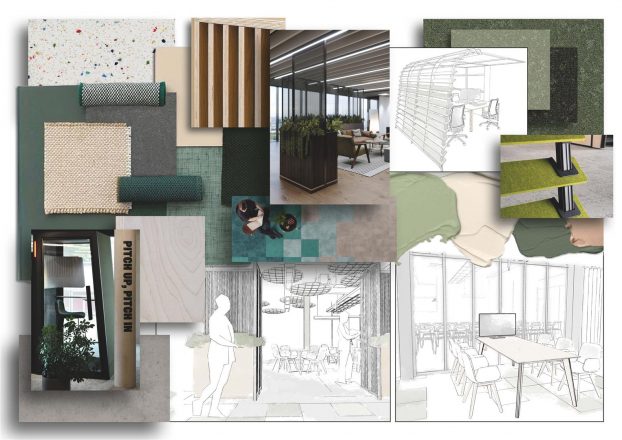Box Architects’ senior interior designer, Sophie Clarkson, looks at interior design in the new office age , and insists it’s not just paint on the walls and fluffy cushions.
“Interior design for the modern office is first and foremost about understanding how people want to work, and how they want to experience the space. Our role at Box is about making sure we can meet these expectations.
The other important thing we need to recognise is that demands and needs change.
Fortunately, we no longer subscribe to Frederick Taylor’s early-20th century view that to ‘maximise industry efficiency’, workers had to be seated in endless rows while managers watched them from galleries above. But we have developed Frank Lloyd Wright’s vast open-plan offices of the 1930 and so-called ‘cubicle farms’ from the 1970s to create today’s more balanced style of private meeting rooms and collaborative break-out spaces. And there’s no greater example of change than the seismic post-pandemic shift towards home- and hybrid-working.
There’s little doubt that homeworking has its benefits. Individuals comment on improved work-life balance, and there’s evidence of greater productivity and improved sickness absence rates. However, there are also benefits for employers when people are in the office, such as creative collaboration, mentoring of junior colleagues and greater alignment to the company’s brand values and culture.
So, today’s offices need to be somewhere people want to be – worth the commute.
How do we achieve that?
When designing offices, Box considers the importance of natural light, fresh air and end-of-trip facilities – the opportunity to cycle into work or go to the gym at lunchtime is important for an increasing number of employees.
We also recognise that when people do swap home-working for the office, they still need privacy. So, we incorporate meeting rooms or spaces for people to focus on their work or take part in video calls. At the same time, collaborative spaces for employees to connect with colleagues need to be designed so as not to disturb others.
For me, it’s all about flexibility and adaptability. Fixed furniture, fixed walls and a fixed way of thinking about office design need to be things of the past.”
